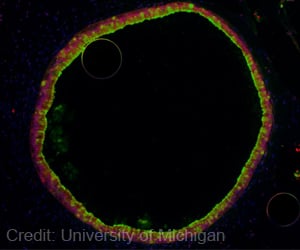
‘High-profile public awareness campaigns needs to be launched and institutions such as hospitals need to be more transparent so consumers can be informed about anti-microbial resistance and drug-resistant outbreaks.’
Tweet it Now
If the bacteria continue to develop resistance, that end-of-the-line therapy ultimately will fail, and an estimated 800,000 Americans a year could face untreatable gonorrhea and the serious health problems it cause.In the United States, drug-resistant gonorrhea already is one of the country's three most urgent superbug threats, according to the Centers for Disease Control and Prevention.
CDC warned this summer that evidence of gonorrhea's diminished vulnerability to one of the last-resort drugs, azithromycin, was emerging nationwide. But it said the other antibiotic, ceftriaxone, was still effective.
There had already been signs that the bacteria, which have vanquished multiple other antibiotics, were starting to be able to evade azithromycin and cephalosporins, the class of antibiotics that includes ceftriaxone.
That is why the latest findings are so distressing for health officials. It means current treatment options are in jeopardy, said Gail Bolan, director of CDC's division of STD prevention. "What's unique about this cluster now identified in Hawaii is that these strains, we've really never seen before," she said.
Advertisement
Since 2005, there have been four isolated cases reported in which the Neisseria gonorrhoeae bacteria had reduced susceptibility to both drugs. But this is the first time a cluster of such cases has been seen in the US.
Advertisement
The Hawaiian cases, six men and a woman, were all cured of their infections. But it seems only a matter of time before treatment failures occur.
Earlier this year doctors from Britain reported that a man infected with gonorrhea was not cured by his first course of antibiotics, though follow-up treatment three months later did quell the infection.
Many people don't actually know they're infected with gonorrhea because they have no symptoms. As a result, the disease goes undetected and untreated, which can cause a range of problems. Women risk chronic pelvic pain, life-threatening ectopic pregnancy and even infertility. And for both women and men, infection also increases the risk of contracting and transmitting HIV.
If this combination of drugs fail, there is no other treatment option currently available.
An oral antibiotic ETX0914, made by Entasis Therapeutics, of Waltham, Mass which is under development might offer a possible new treatment, researchers from Louisiana State University said at the CDC-sponsored conference in Atlanta. The drug was generally safe and effective in treating gonorrhea in a phase 2 clinical trial.
The experimental drug works differently from any currently marketed antibiotic. It is a single-dose oral therapy and could be used as an alternative to a ceftriaxone injection. In the randomized controlled trial, researchers treated 179 people with gonorrhea using the experimental drug alone (at two different dosages) or ceftriaxone alone. Virtually all the patients receiving the experimental drug were cured, they said. Every patient given ceftriaxone also was cured.
But it is still likely years away from hitting the market as those results will need to be confirmed in a large-scale clinical study.
Source-Medindia














